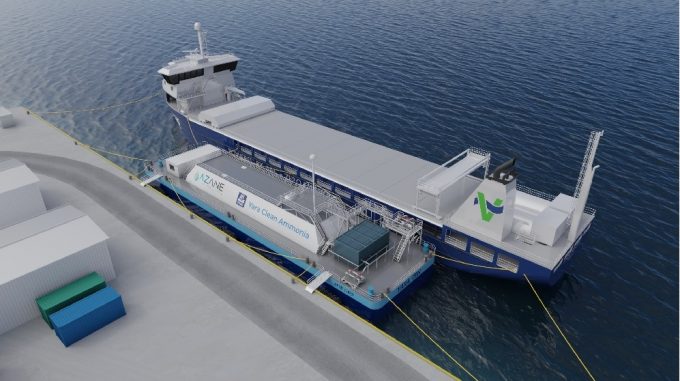DB Schenker to operate zero-emission electric feeder for furniture shipper
DB Schenker has laid out plans to operate a zero-emission autonomous feeder vessel, which will ...

Norwegian fertiliser manufacturer Yara International has ordered 15 ammonia bunkering terminals with Azane Fuel Solutions for port- or barge-based ship-to-ship (STS) bunkering.
Yara Marine is banking on the continuing use of existing steam-methane-reforming (SMR) infrastructure as a faster route to market for ammonia ship fuel. In a presentation last week, Yara Bunkering director Christian Berg said SMR incurred “high CO2 emissions at the production phase” but that this could be mitigated with carbon capture.
With an abundance of renewable hydropower energy supplying its homes and businesses, Norway is setting up numerous projects to generate energy and bury the resulting CO2 in vaults under the North Sea. The government launched a full-scale carbon capture and storage (CCS) project, dubbed Project Longship, in 2018.
“Yara is working to have both green and blue ammonia available,” Mr. Berg told The Loadstar. “With blue ammonia you can use carbon capture at existing facilities, but with green ammonia you need electrolysers, so it’s a little more complex, and high on capex. But we are working on both.”
The advantage of green or blue ammonia over its rival, green methanol, is that it can be burned in a ship engine without any ‘tank-to-wake’ carbon emissions at the funnel, making the ship low-emission at its operational level as well as on the ‘well-to-wake’ lifecycle level.
The disadvantage, however, is that ammonia is extremely volatile, and toxic, and requires careful handling.
However, Mr Berg said STS bunkering of ammonia would not be difficult.
“Ammonia is being traded, and many ports already have ammonia infrastructure. We are looking at a higher transfer rate than LNG, so it will take less time to bunker ammonia. But you need some security measures in place and you need to have a high focus on safety.”
Critics of carbon capture utilisation and storage (CCUS) say the technology is unproven, the costs are prohibitive and that, rather than offset or mitigate further extraction of fossil fuels, serves as a licence to continue to do so.
Comment on this article